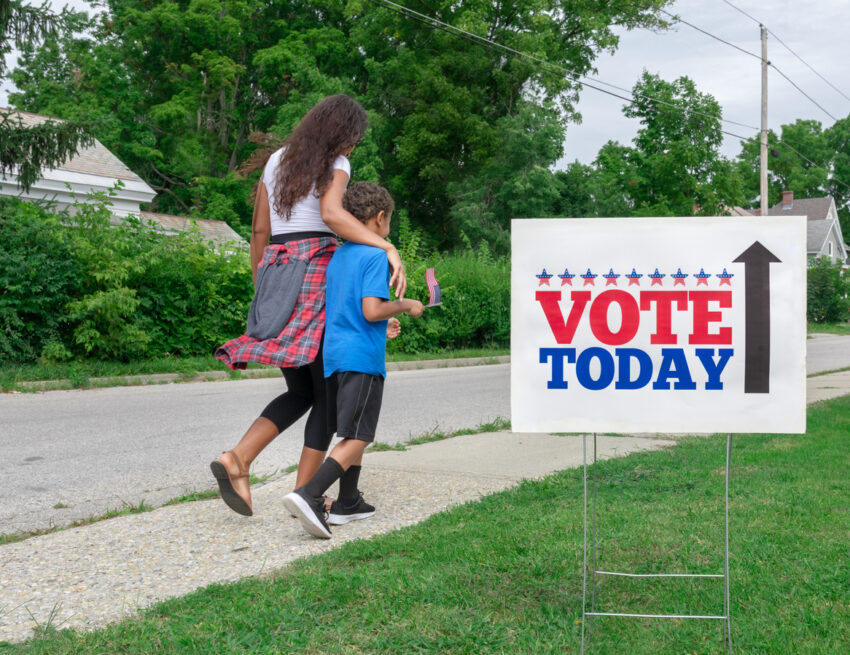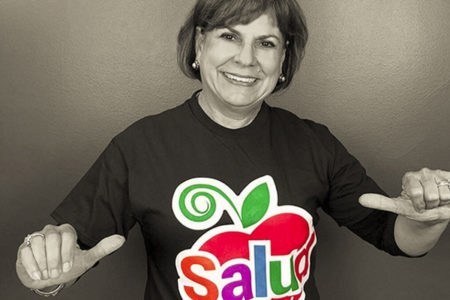
Share On Social!
An estimated 17.5 million Latino voters will cast ballots in the 2024 Election in November, a record high, according to a report from the NALEO Educational Fund.
This is a 6.5% increase in Latino voter turnout from Election 2020.
“With more than one of every 10 voters in 2024 expected to be Latino, our community is poised to play a decisive role in the presidential election and others throughout the nation,” said NALEO Educational Fund CEO Arturo Vargas in a press release.
Let’s dive into the numbers and explore how this impacts Latino voters!
Latino Voter Projections
Overall, 11.1% of all voters are projected to be Latino in Election 2024.

While the national Latino vote is projected to increase 6.5% from 2020 turnout numbers, the national non-Hispanic vote is projected to increase by only 1.5% from 2020 turnout numbers.
“As the eligible Latino electorate continues to grow, it is imperative that the actual number of Latinos exercising their right to vote experiences commensurate growth. This increase is crucial for the Latino community to realize its full political potential in Election 2024 and beyond,” according to the NALEO report.
Latino Voter Projections by State
NALEO expected the largest increase in voter turnout to occur in battleground states.
Battleground states, also called swing states, are regions where neither major political party holds dominance, with election being characterized by having small vote margins and that different political parties win over time.
“[Battleground state are] where sustained efforts have historically been made to engage and mobilize Latino voters,” according to the NALEO report.
According to the report, Latino voter turnout in 2024 is also projected to increase in Nevada, a key battleground state, and in other states with large Latino electorates.
Other key states set for increased voter turnout include:
- California (6.1% increase)
- Florida (13.8%)
- Nevada (15.5%)
- New York (12.4%)
Election 2024 Latino turnout in Arizona, Georgia, New Jersey, and Texas will likely mirror that of 2020, the report mentions.
Factors Impacting the Latino Vote
Several factors are driving higher Latino voter turnout.
Latino families are especially concerned with inflation, education, health, and childcare, according to a recent report by Abriendo Puertas/Opening Doors.
The NALEO report reinforces the importance of health, including COVID-19.
“While the COVID-19 pandemic has abated, some Latino voters may take health concerns into consideration when making decisions about electoral participation,” according to the report.
NALEO also mentions other factors that the projections cannot fully capture, including naturalization trends, the scope of efforts by candidates and political parties to engage Latino voters, and the impact of misinformation and disinformation.
The extent to which competitive races in individual states mobilize Latino voters and changes in voting registration, laws, and practices are also factors.
“Candidates and political parties must invest significant resources in sustained mobilization of eligible Latino voters,” according to a NALEO Education Fund presentation.
How to Vote
For Latinos with questions about voting, find resources from VotoLatino.
Also, the NALEO Educational Fund has a year-round, toll-free bilingual hotline that Latinos can reach at 1-888-VE-Y-VOTA (1-888-839-8682).
The hotline provides Latino voters with vital information including:
- How to register to vote
- State voter ID requirements
- Election Day polling place locations
- How to seek assistance with voting issue
For additional information and the full report, visit the NALEO Educational Fund Election 2024 Data and Research Hub.
Use Your Voice in Your Community
Voting is a powerful tool to help advocate for change in your community.
You can print these coloring sheets in English and Spanish from MomsRising that teach our littlest learners about voting and why it matters.
Another way to help is downloading a Health Equity Report Card from Salud America! at UT Health San Antonio.
The report card provides maps, data, and gauges to compare public health issues to other counties and states across the nation.
Explore data in your community regarding topics like housing, education, transportation, health care, and more!
Find the results of your county and share them with local leaders and organizations to advocate for change in your community.
GET YOUR HEALTH EQUITY REPORT CARD!
Explore More:
Increasing Civic EngagementBy The Numbers
50
percent
of big U.S cities have a local board of health



